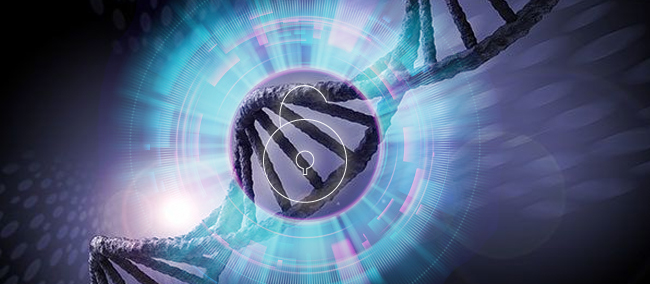
Buried within our DNA, there exists a vast amount of dormant genetic material – a remarkable percentage of which consists of ancient inserted elements that have found their way into our genome, only to be silenced for millions of years.
While the origins of most of these obsolete retroelements are not fully known, their inactive status is epigenetically controlled. It has been suggested that “turning on” these parts of our genome could be useful, especially in fighting off certain diseases like cancer that notoriously outwit and overpower our immune system.
In a new study published in Nature, a team of scientists at the University of Toronto led by Dr. Daniel De Carvalho, Associate Professor, Medical Biophysics, has now identified the purpose of some of these genomic remnants, and what they have found could lead to a completely new field of cancer therapies.
Utilizing epigenetic drugs, the researchers activate these repressed retroelements to induce what is referred to as “viral mimicry”. This effect essentially prompts the cancer cells to behave like an infection, thereby signaling the immune system into an aggressive attack. Moreover, they have also discovered how to drive down any resistance to this assault by inhibiting an enzyme used by the cancer cells as a defense mechanism.
Dr. De Carvalho points out that over the course of evolution, the human genome has collected a series of silent repetitive elements. “It has been unclear why or what purpose they serve,” he says. “As’ genome archeologists,’ we set out to identify the function of these ‘DNA relics’ and have found that under the right conditions, they can be reactivated and stimulate our immune system.”
In a previous article, we have discussed how most of our DNA is made up of non-functioning parts that lay scattered along the genome and are suppressed via DNA methylation. We have also written several articles that show how viruses use epigenetics to evade the immune system and how epigenetic cancer therapies are becoming more mainstream.
Indeed, one of the most exciting and fastest-growing areas in clinical oncology involves investigating innovative epigenetic therapies that can potentially modify the immune system to combat tumor cell growth. Finding effective and safe treatment is especially important today since not all cancer patients respond well to current immunotherapy methods.
Unlike gene therapy, which works by altering the genetic code, epigenetic drugs modify only changes in gene expression. Epigenetic alterations occur naturally in cells as a result of factors such as aging, lifestyle experiences, and other environmental exposures. Because these occurrences are inherently reversible, therapies that can completely remove the modifications may allow cells to revert back to their original precancerous condition.
Prior research has shown that people with cancer tend to have aberrant epigenetic mechanisms that disable antitumor systems. For epigenetic cancer therapies to be successful, they must target areas within the genome that boost the protective effect against cancer growth without negatively impacting other biological functions.
Retroelement transcripts that are activated by epigenetic drugs can produce double-stranded RNA (dsRNA), which is quickly picked up by pattern recognition receptors (PRRs) within a cell and detected as viruses. PRRs mediate the commencement of the body’s immune response by releasing inflammatory cytokines to destroy these pathogens.
The cancer cells are clever, though, and harbor their own adaptive and acquired resistance. They react to the viral mimicry state by activating an enzyme known as ADAR1 that blocks the signaling initiated by the dsRNA to halt the body’s immune attack.
In the study, the researchers demonstrate that the main source of drug-induced immunogenic dsRNA comes from intronic and intergenic SINE (Short Interspersed Nuclear Elements), which are naturally latent in our genome and pose no harm to the host. ADAR1, however, weakens the dsRNA and prevents it from activating the pattern recognition receptor MDA5. To improve the efficiency of the epigenetic drug, the team depleted the ADAR1 enzyme making the cancer cells more sensitive to the induced viral mimicry.
As Dr. De Carvalho explains, “Since the ADAR1 activity is enzymatic, our work provides an exciting new target for drug development efforts for a completely new class of drugs that are able to exploit these ‘ancient weapons’ in our genome.”
Although more research is needed, the findings from this study “open up a new field of cancer therapies,” says Dr. De Carvalho. “It gives us the opportunity to take advantage of these ancient repetitive DNA elements to fight cancer.”
Source: Parinaz Mehdipour, et al. (2020). Epigenetic therapy induces transcription of inverted SINEs and ADAR1 dependency. Nature.
Reference: October 21, 2020, “Genome archeologists discover a path to activate the immune response against cancer.” University Health Network.

